|
Landscaping with SucculentsSucculents are a wonderful and beautiful group of plants. Their water thrifty ways make them a perfect addition to a water wise landscape. With a little planning and preparation, you can achieve a unique and beautiful look that will be the envy of the neighborhood!
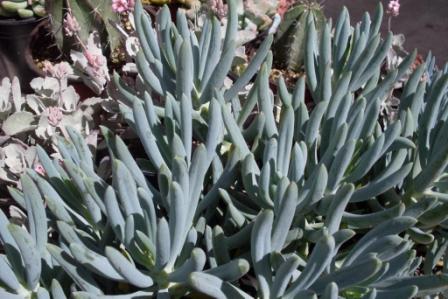
These easy care plants have a few basic requirements: Light - They always look their best in full sun. Soil - These water wise plants prefer a well drained soil - they don't like to be kept wet. If you have a heavy clay soil, mix in some compost (learn how to make compost here) or other organic material. In very sandy soil, a little compost will help here also. Drainage - Plant them a little high so the water does not collect around the crown of the plant. Just high enough so the water drains away and doesn't puddle. Water - Your new plants will need some water to get them established. A couple times a week for the first 2 months should be adequate. After that, once every week or 2 during the summer, and most likely none at all during the winter. Fertilizer - A single application of a gentle organic fertilizer like Cottonseed Meal in the spring works wonders. If you prefer, you can also use a liquid fertilizer (half strength) every other month during spring and summer. Cold Hardiness - Most succulent varieties will not take extreme cold, in more temperate climates you have a wide assortment to choose from. In colder climates, consider using some of the very cold hardy cactus to achieve a great water wise landscape.
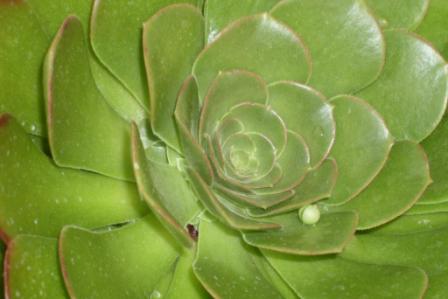
Design Basics
To achieve a great look with your succulent landscaping, follow these few simple guidelines: 1. Plant in groupings. This is the most important tip. Plant 5, 7, 9 or more of the same variety in a group. Planting single specimens will give you a cluttered look. 2. You can use either geometric patterns (triangles, squares, rectangles) for a very formal look. Most people prefer a more informal look with curving planting areas. 3. Mix colors and textures. One of the great features of succulents is the wide range of leaf colors. Mix them up! Don't plant groups of the same color and texture next to each other.
Succulent Varieties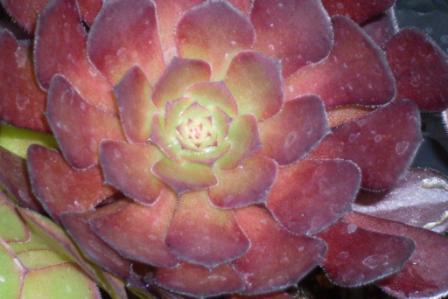
Aeonium provides a wide range of colors, light to dark greens, pinks, reds, silver, burgundy, and variegated. There are literally dozens of color variations available. They generally have large leaves and are hardy to 32 degrees, so they are best in the coastal areas. Crassula includes the popular Jade Plant. This group of plants offers many different textures and leaf shapes. The color variety includes shades of green, silver, blue and bronze. They also produce attractive clusters of pinkish white flowers. This is another one that is best in frost free areas.
Echeveria is a very large group of plants and provides some of the most spectacular blues and silvers, along with some green and rose colored varieties. Most are compact growers, and will certainly brighten up your landscape. Echeveria does not tolerate freezing temperatures. Haworthia includes some great variation in textures. Leaves can be rounded or long and tapered, and everything in between. This is a great plant to bring some different texture to your succulent landscape. Like most succulents, it needs a frost free area.
Kalanchoe includes a popular florist variety grown for its attractive flowers. This group of plants also includes some very interesting leaf shapes and textures. Some are smooth, many are fuzzy. Another great addition to the landscape in frost free areas.
Sedum includes many varieties that are quite cold tolerant (finally!), especially Sedum spurium and Sedum spectabile. A few varieties are not, so be sure to check the cold tolerance of an individual variety before planting in a colder climate. These are extremely easy to grow, and provide a nice range of colors and textures.
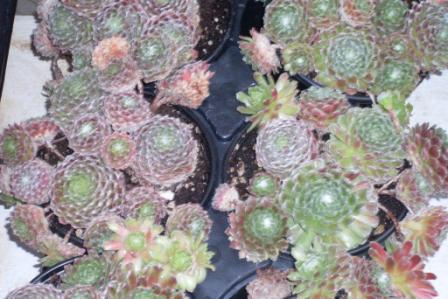
Sempervivum (Hens and Chicks) includes over 3,000 different cultivars, most of which will tolerate some frost. This group provides some spectacular colors and textures, in shades of blues, grays, silvers, greens, pinks, and reds. They also produce attractive star shaped flowers, usually pink or red. After blooming, that rosette will die, but don't worry - another rosette will soon take its place!
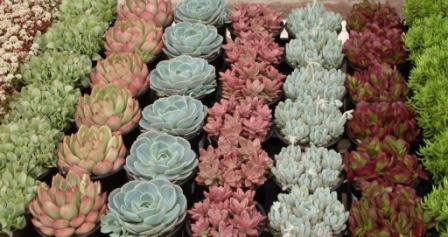
Landscaping with succulents is a great way to promote green living. You'll save water, and have a unique and beautiful landscape!
Return to Landscaping Ideas from Landscaping with Succulents here
|
